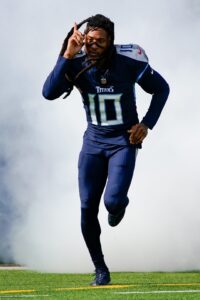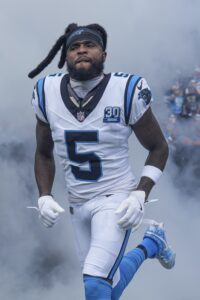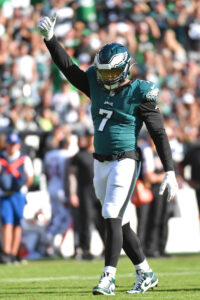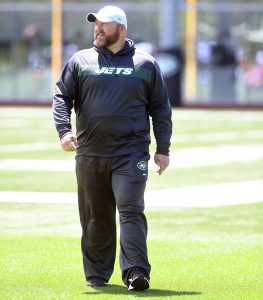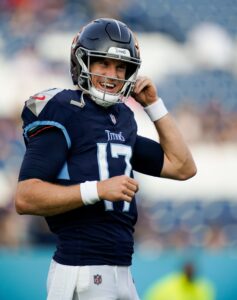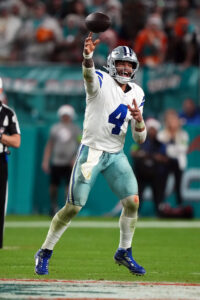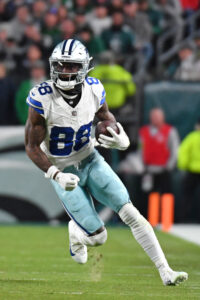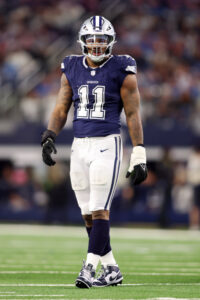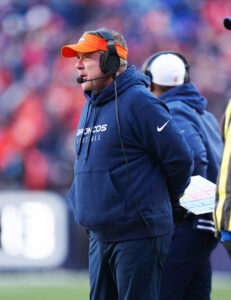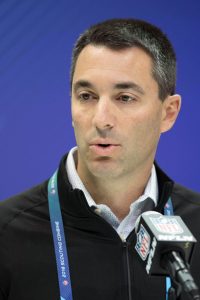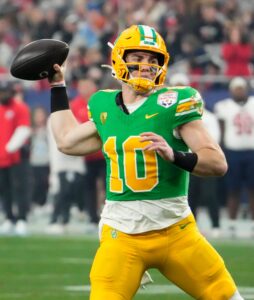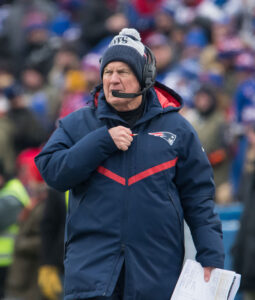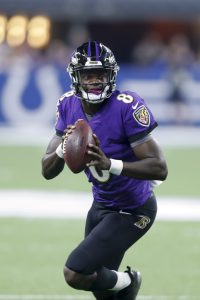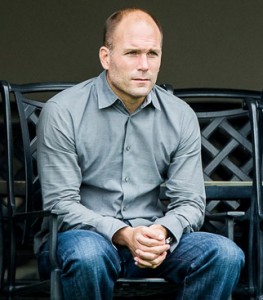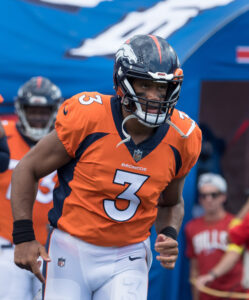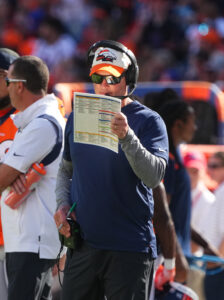The 2023 NFL season yielded a dearth of clear-cut MVP candidates, but that has not proven to be the case this year. Several players made a claim to receive consideration at various points in the campaign, and debate has continued through the conclusion of the season regarding which one will ultimately take home the award at NFL Honors. 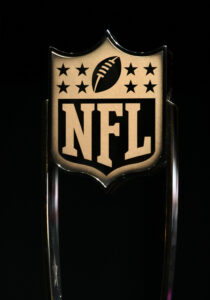
As usual, quarterbacks have dominated the discussion. Eagles running back Saquon Barkley led the way for other positions in 2024, a year in which he became the NFL’s ninth ever 2,000-yard rusher. Especially given the team’s decision to rest him in Week 18 (which prevented him from being able to attempt breaking Eric Dickerson’s all-time record), though, it is extremely unlikely the run of QBs receiving the MVP nod will end this year.
Joe Burrow and the Bengals’ passing attack gave the team a chance to rally from 4-8 into the postseason, and a wild-card berth was still possible entering the final day of the regular season. Cincinnati fell short of the No. 7 seed, however, effectively ending Burrow’s chances of receiving votes at the top of the MVP ballot. The likes of Jared Goff (Lions) and Sam Darnold (Vikings) are likely to be popular names on the lower end of many MVP voters’ final five-player lists, but as far as most observers are considered the race for the award is down to two contenders.
Lamar Jackson has served as the Ravens’ full-time starter for six seasons. Twice in his previous five – including two of the past three where he has remained healthy through the full campaign – he has collected the Most Valuable Player award. That includes a unanimous nod in 2019 as well last year’s award, for which the only other first-place vote went to Josh Allen. Unsurprisingly, the Bills star once again finds himself as the other candidate to receive the honor this year.
 Baltimore and Buffalo both saw several notable changes this past offseason, although continuity at a number of spots and with respect to the team’s offensive coordinators was also present. In the case of both division-winning teams, the play of their quarterbacks was the driving force of their overall success, and any number of angles can be taken when arguing in favor of Jackson or Allen. While the latter sat out the closing minutes of several blowouts this year and only logged one snap in Week 18, both passers offered a strong sample size for MVP evaluation.
Baltimore and Buffalo both saw several notable changes this past offseason, although continuity at a number of spots and with respect to the team’s offensive coordinators was also present. In the case of both division-winning teams, the play of their quarterbacks was the driving force of their overall success, and any number of angles can be taken when arguing in favor of Jackson or Allen. While the latter sat out the closing minutes of several blowouts this year and only logged one snap in Week 18, both passers offered a strong sample size for MVP evaluation.
Jackson and the Ravens needed a win in Week 18 to clinch the AFC North in part due to their 0-2 start to the year. At the end of the campaign in particular, though, the team’s offense showed signs of improvement with Jackson’s increased passing efficiency on full display. In all, the Louisville product finished with career highs in yards (4,172) and touchdowns (41) through the air coupled with four interceptions. No quarterback in league history has recorded more than 40 passing TDs while also managing fewer than five interceptions.
With those totals in mind, it comes as no surprise Jackson’s passer rating for the season (119.6) also checked in at a career high. That figure not only led the league, but it was the fourth-highest single-season total in NFL history. As usual, Jackson was also impactful in the run game; his 915 rushing yards topped the field amongst quarterbacks while his 6.6 yards per attempt average led the NFL. Shortly put, the raw statistics in most categories point toward a third MVP award.
Allen’s performance is highly impressive on many fronts as well, however. Transitioning to a new receiving corps in the offseason (and, in the case of Amari Cooper, midway through the campaign), he led the Bills to a comfortable AFC East title en route to the conference’s No. 2 seed. A pair of Buffalo’s 13 wins in particular understandably drew major attention around the league. The Bills are responsible for the Chiefs’ only regular season loss in which they played their full lineup as well as one of the Lions’ two defeats. Especially with the latter victory coming in Detroit, it helped Allen’s MVP case and highlighted his stellar campaign. 
With 28 passing touchdowns and 12 rushing scores (second most in the league amongst QBs), Allen repeated an unprecedented feat in terms of prolific scoring through the air and on the ground in the same season. While ball security has been the source of criticism in past seasons, he committed only eight in 2024. The Wyoming product’s 14 sacks taken were also by far the fewest of his career. Coupling those numbers with individual moments like his fourth-and-2 touchdown run against Kansas City and the play in which he threw and caught the same TD pass against San Francisco make it easy to foresee Allen’s first MVP nod being a distinct possibility.
The Bills and Ravens met head-to-head in Week 4, with Baltimore earning a comfortable victory. Overall, Jackson’s numbers in games against playoff-caliber opponents outweigh Allen’s, although on the other hand the fact Buffalo finished with a superior record in what was viewed as a transitional year may balance the scales on that front. In any case, the 28-year-old draft classmates have each enjoyed the primes of their careers, and both signal-callers’ résumé’s have been significantly bolstered by the 2024 campaign.
There is precedent for the MVP award to be shared, as that has proven to be the case on two occasions (Brett Favre and Barry Sanders in 1997; Peyton Manning and Steve McNair in 2003). Unless that situation emerges again, though, voters will be met with a Jackson-or-Allen decision. Regarding AP first-team All-Pro nods, Jackson wound up with a 30-18 edge over Allen in terms of votes. That is generally an indication of how the MVP competition will shake out; indeed, as ESPN’s Alaina Getzenberg notes, every quarterback named first-team All-Pro since 2013 has also taken home MVP honors.
With all ballots submitted and the countdown on until NFL Honors, how do you see the MVP race ending? Have your say in the comments below.


